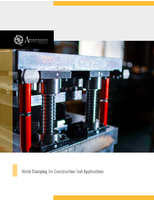DENSO Develops It First EGR Cooler for Gasoline Engines
Share:
DENSO's EGR Cooler is 30 percent smaller than others in the market
KARIYA (Japan) - In an effort to meet stricter fuel efficiency and exhaust emission regulations worldwide, DENSO Corporation has developed its first EGR cooler for gasoline engines. The newly developed EGR cooler is 30 percent smaller than the smallest one currently available on the market, while offering equal performance.
"As OEs around the world look to downsize engines to help meet the increasingly stringent regulations, EGR systems are becoming more necessary to optimize the powertrain combustion process and improve fuel economy," said Akio Shikamura, senior executive director of DENSO's Thermal Systems Business Group. "Because there is limited space in the engine compartment, an emphasis on size reduction is a major factor in developing EGR systems. DENSO's new and compact EGR cooler will greatly help reduce the overall EGR system size."
What it Does and How it Works:
EGR systems recirculate a portion of engine exhaust gas back into the intake manifold to increase fuel efficiency (see Figure 1). EGR coolers decrease the temperature of hot exhaust gases recirculated into the intake manifold, which also increases the density of the exhaust gas. This helps increase the performance of EGR systems, which reduce engine loss and prevent engine knocking. Vehicles with EGR systems equipped with EGR coolers can potentially increase fuel efficiency by 2 to 3 percent.
DENSO's EGR cooler uses finer slits, just 1 mm wide, compared with conventional models with internal fin slits measuring 4 to 5 mm in width, which allows the system to discharge more heat per unit volume. This design enabled DENSO's EGR cooler to be 30 percent smaller than the smallest product in the market, all while offering equal performance.
This EGR cooler is installed in Toyota's Camry and AQUA, also known as the Prius C, which will be available on the global market. DENSO plans to offer this product worldwide as a solution to meet tighter fuel-efficiency and exhaust regulations.
DENSO Corporation, headquartered in Kariya, Aichi prefecture, Japan, is a leading global automotive supplier of advanced technology, systems and components in the areas of thermal, powertrain control, electric, electronics and information and safety. Its customers include all the world's major carmakers. Worldwide, the company has more than 200 subsidiaries and affiliates in 35 countries and regions (including Japan) and employs approximately 120,000 people.
Consolidated global sales for the fiscal year ending March 31, 2011, totaled US$37.7 billion. Last fiscal year, DENSO spent 9.3 percent of its global consolidated sales on research and development. DENSO common stock is traded on the Tokyo and Nagoya stock exchanges. For more information, go to www.globaldenso.com, or visit our media website at www.densomediacenter.com.
Generally, the amount of air drawn into the engine is controlled by the throttle valve. When the engine is not required to produce high power, such as at low speeds, the throttle valve is partially closed. This reduces the amount of air forced into the cylinders, and at the same time the amount of fuel injected is reduced. The air passage section narrowed by the partially closed throttle valve allows a small amount of air to flow into the engine, which increases the engine loss. When the engine loss is high during acceleration or at high speeds, knocking (abnormal combustion) occurs because fuel is burned at high temperature, which reduces fuel efficiency.
To solve these problems, EGR systems recirculate some exhaust gas, instead of using fresh air, into the engine cylinders to reduce piston load while maintaining a small amount of fuel injection. This slows the rise in temperature of the air/fuel mixture, increasing fuel efficiency.




